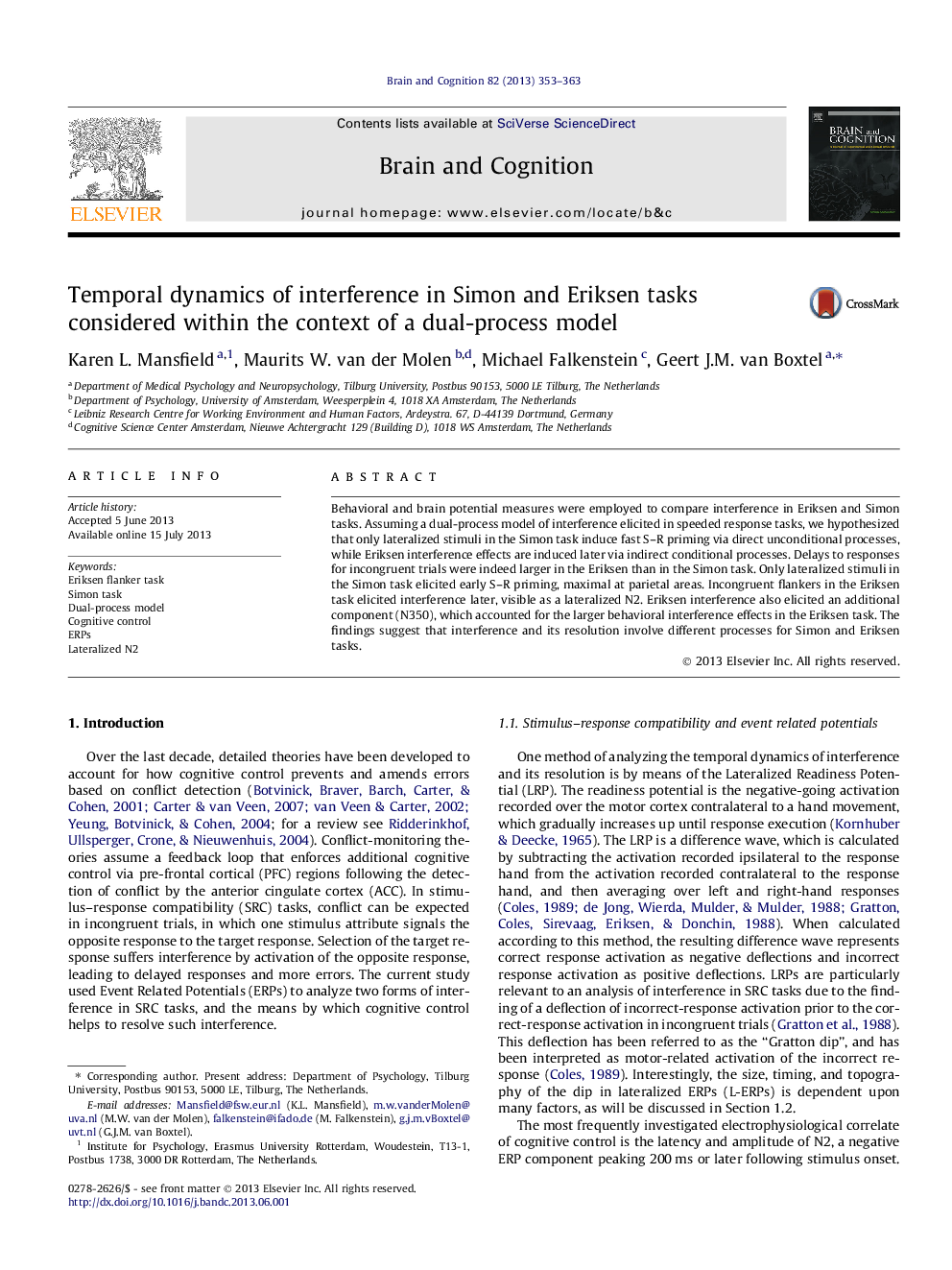| Article ID | Journal | Published Year | Pages | File Type |
|---|---|---|---|---|
| 924582 | Brain and Cognition | 2013 | 11 Pages |
•Interference effects were larger in the Eriksen task than in the Simon task.•Interference in L-ERPs in the Simon task was early with a parietal maximum.•Interference in L-ERPs in the Eriksen task was later at lateralized N2.•Eriksen interference elicited later cognitive control (at N350).
Behavioral and brain potential measures were employed to compare interference in Eriksen and Simon tasks. Assuming a dual-process model of interference elicited in speeded response tasks, we hypothesized that only lateralized stimuli in the Simon task induce fast S–R priming via direct unconditional processes, while Eriksen interference effects are induced later via indirect conditional processes. Delays to responses for incongruent trials were indeed larger in the Eriksen than in the Simon task. Only lateralized stimuli in the Simon task elicited early S–R priming, maximal at parietal areas. Incongruent flankers in the Eriksen task elicited interference later, visible as a lateralized N2. Eriksen interference also elicited an additional component (N350), which accounted for the larger behavioral interference effects in the Eriksen task. The findings suggest that interference and its resolution involve different processes for Simon and Eriksen tasks.
